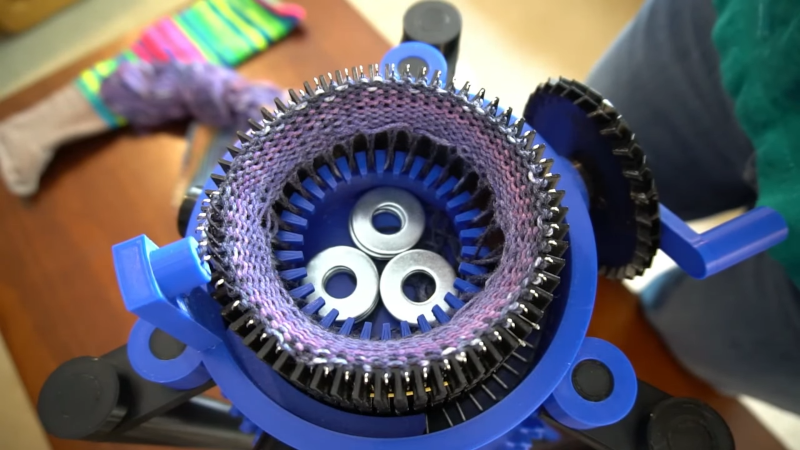While it isn’t for everyone, some of the best creators we know are experts at working with textiles. While the art is ancient, it isn’t easy and requires clever tools. [Lauren] collected a few 3D prints that can help you with knitting, crochet, and even a knitting loom.
Some of the designs are pretty basic like the yarn bowl, or pretty easy to figure out like the simple machine for re-spooling wool. We were frankly surprised that you can 3D print a crochet hook, although the post does mention that breaking them is a real problem.
We were really impressed though, with the sock knitting machine. There are actually a few of these out there, and you can see a similar one in the video below. Of course, like a RepRap printer, it needs “vitamins” in the form of metal rods, fasteners, and the like. There’s also a portable knitting loom which looked interesting.
We aren’t adept enough with fabric arts to know if these tools are serious contenders compared to commercial products, but we have to admit the sock knitting machine looks like it could be. We recently saw a sophisticated loom, although that might be a bit more than most people need. We have looked at open-source knitting machines, too. Of course, if you’d rather not create with textiles, you can always 3D print on them, instead.

















When touring NZ south island many many museums would have not just the one but a collection of different types of hand cranked sock making machine.
Beautifully complicated well built metal pieces of engineering artwork.
I’ve never really seen them in UK museums. I guess as we were never a frontier land.
But it’s clear we exported them to the colonies!!
Do they also proliferate museums in Austraila’s outback and USA “wild west” ?
Any other countries you’d find a lot of them ?
I’ve never seen any hand cranked sock making machines in old US museums, but I’m pretty sure I did in a museum in southeast Iceland, that also had a ton of looms. I feel like the western US largely relied on imports, because people were doing resource extraction rather than subsistence living.
We use several 3d printed tools on our rug loom, and they make filling the beater and warping the heddles way easier: an improvement over the commercial offerings, as well.
Similarly, I’ve modified a commercial yarn winder for measuring the warp strings, using a 3d printed drag/tensioner, and it’s easier to use now that it has an adjustable drag mechanism on it.
the sock machine would be more useful as a parametric design, for larger feet.
I love the “weights for weaving”, wonder how much she overpaid for those washers lol. Other than that, it looks really interesting
45 minutes to demonstrate the operation. https://m.youtube.com/watch?v=dEtm_Q2LK9g
I haven’t seen the whole video, but, have you described how would we go about knitting an ankle in the sock?